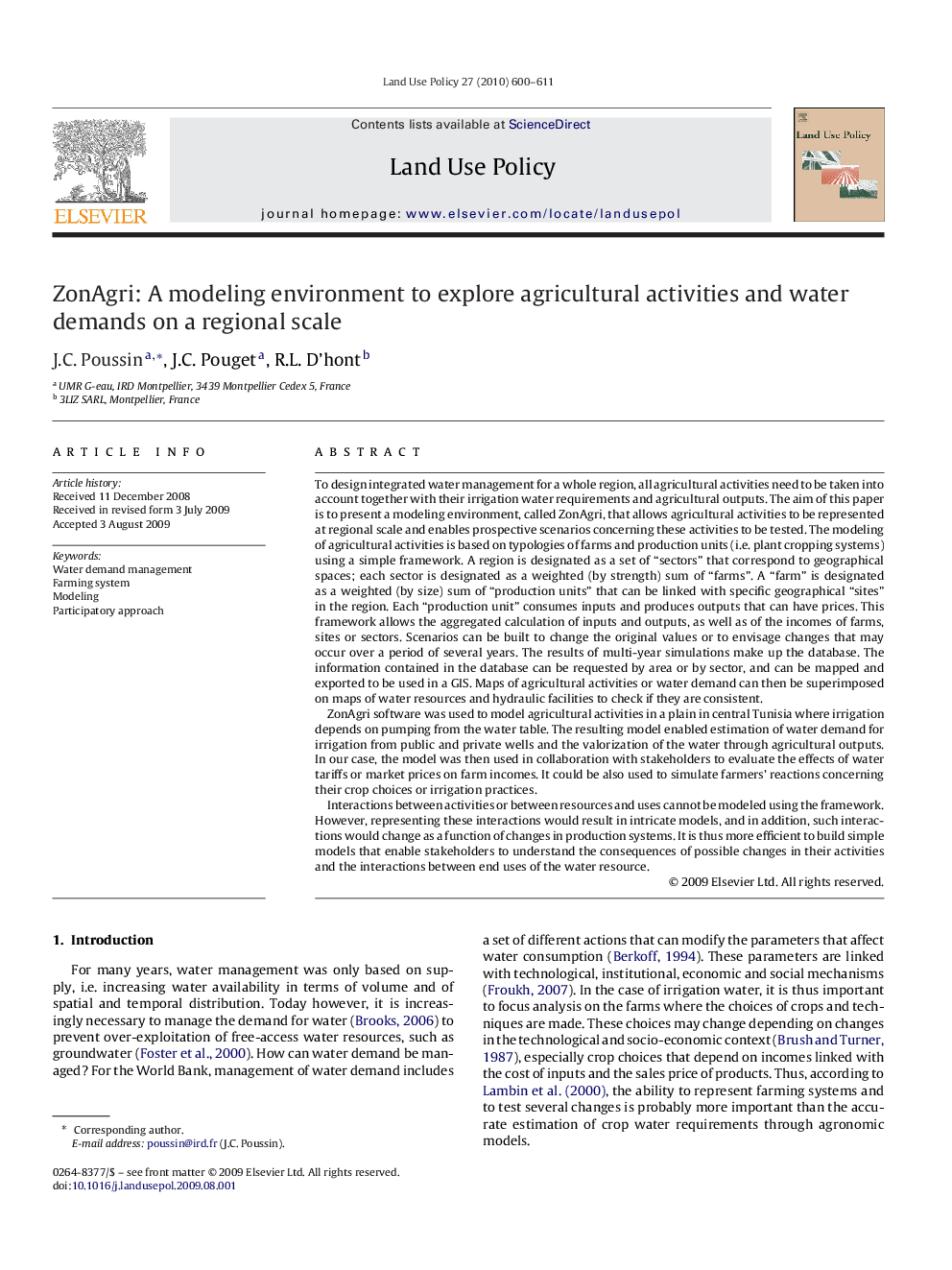| کد مقاله | کد نشریه | سال انتشار | مقاله انگلیسی | نسخه تمام متن |
|---|---|---|---|---|
| 93553 | 160130 | 2010 | 12 صفحه PDF | دانلود رایگان |

To design integrated water management for a whole region, all agricultural activities need to be taken into account together with their irrigation water requirements and agricultural outputs. The aim of this paper is to present a modeling environment, called ZonAgri, that allows agricultural activities to be represented at regional scale and enables prospective scenarios concerning these activities to be tested. The modeling of agricultural activities is based on typologies of farms and production units (i.e. plant cropping systems) using a simple framework. A region is designated as a set of “sectors” that correspond to geographical spaces; each sector is designated as a weighted (by strength) sum of “farms”. A “farm” is designated as a weighted (by size) sum of “production units” that can be linked with specific geographical “sites” in the region. Each “production unit” consumes inputs and produces outputs that can have prices. This framework allows the aggregated calculation of inputs and outputs, as well as of the incomes of farms, sites or sectors. Scenarios can be built to change the original values or to envisage changes that may occur over a period of several years. The results of multi-year simulations make up the database. The information contained in the database can be requested by area or by sector, and can be mapped and exported to be used in a GIS. Maps of agricultural activities or water demand can then be superimposed on maps of water resources and hydraulic facilities to check if they are consistent.ZonAgri software was used to model agricultural activities in a plain in central Tunisia where irrigation depends on pumping from the water table. The resulting model enabled estimation of water demand for irrigation from public and private wells and the valorization of the water through agricultural outputs. In our case, the model was then used in collaboration with stakeholders to evaluate the effects of water tariffs or market prices on farm incomes. It could be also used to simulate farmers’ reactions concerning their crop choices or irrigation practices.Interactions between activities or between resources and uses cannot be modeled using the framework. However, representing these interactions would result in intricate models, and in addition, such interactions would change as a function of changes in production systems. It is thus more efficient to build simple models that enable stakeholders to understand the consequences of possible changes in their activities and the interactions between end uses of the water resource.
Journal: Land Use Policy - Volume 27, Issue 2, April 2010, Pages 600–611